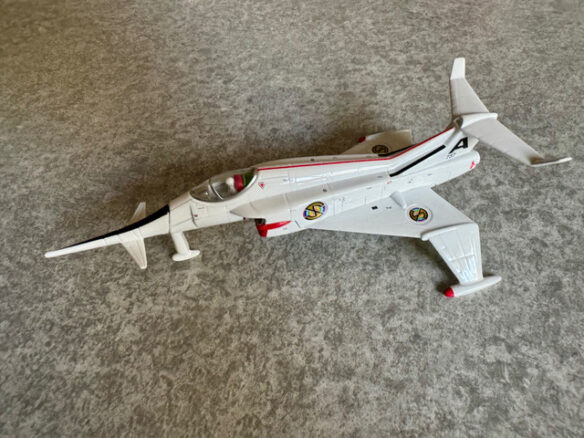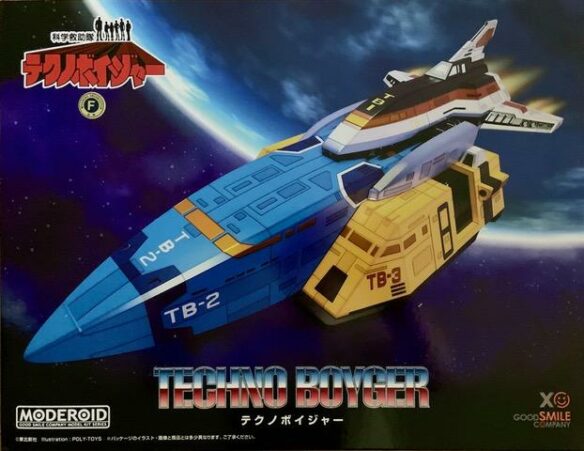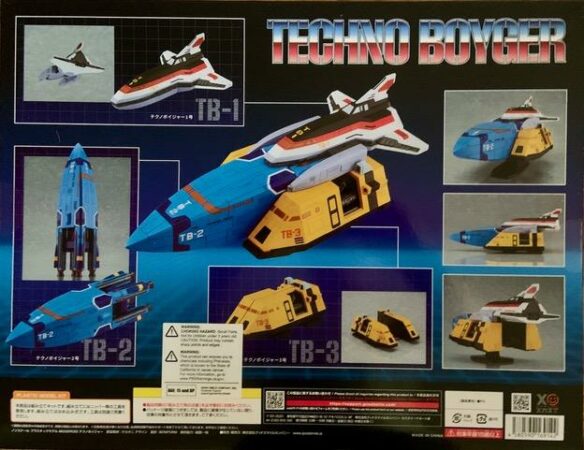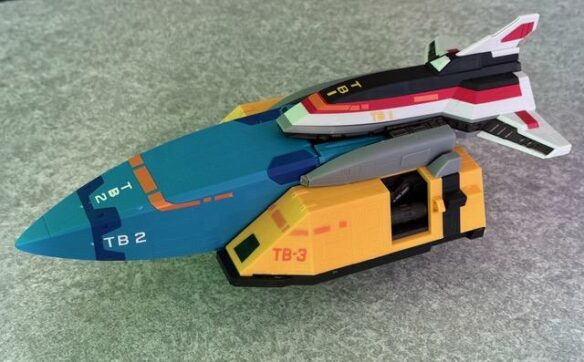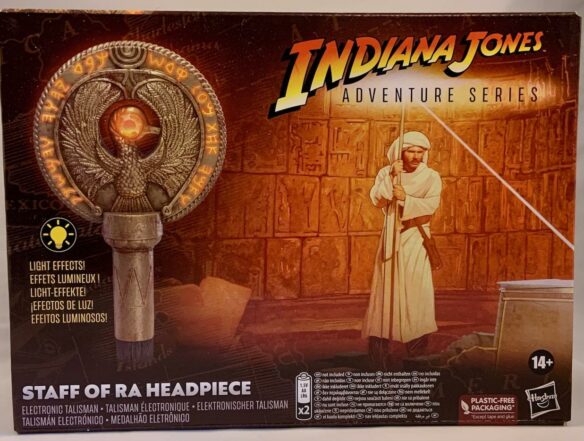
Bite My Shiny Metal Ass – Bender
Review by Iain Delaney: Futurama is an animated science fiction comedy that aired on the Fox network in the United States from 1999 to 2003. After cancelation by Fox, the series was picked up by Comedy Central, where it ran from 2008 to 2013. Since last year, a third revival has been available on Hulu in the U.S. and Disney+ in other parts of the world. The series originated from the creative minds of Matt Groening of The Simpsons fame and David X. Cohen.
One of the main characters of the series is the robot Bender (full name: Bender Bending Rodriguez). Bender is a foul-mouthed, cigar-smoking, beer-drinking (he uses it for fuel) kleptomaniac, and one of the funniest characters on the show. The Bender Robot Action Toy is not quite so amusing, but still elicits a smile.
The robot toy comes in a two-color print cardboard box, reminiscent of old-fashioned toy packages of the 1950s and 60s. Inside the box is a clear plastic tray containing Bender, his props, and a solid wind-up key. Bender stands about 8 inches tall and can be equipped with his trademark stogie and a bottle of beer. Put the cigar in a hole in his mouth, and his left hand is specifically shaped to hold the beer bottle.
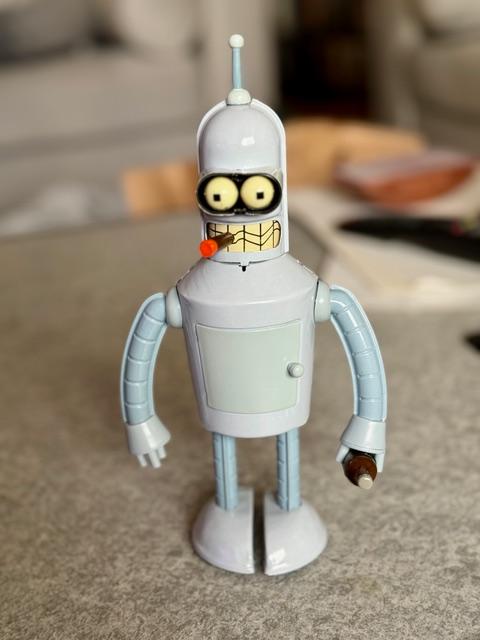
Bender is made mostly of tin in a tribute to the tin toy robots of days gone by. His arms and legs are plastic, as are his eyes and the antenna on the top of his head. In a nice touch of accuracy, his central compartment opens up, but there is no room to hide anything, since his clockwork mechanism completely occupies it.
You insert the winding key in a hole in the right side of his body and wind him up. The legs immediately start rolling forward; first one, then the other. A ratchet mechanism prevents them from rolling backwards so that Bender slowly walks across whatever surface you put him on. This is one of the two popular methods for walking toy robots; the other being a side-to-side walking motion that lifted one foot, then the other. I think I prefer the shuffling motion that Bender uses since it fits his character better.
Bender was made in the year 2000 by Rocket USA toys, but they sadly seem to no longer be in business. I think I bought him many years ago at a tin toy shop. Now, if you can find him on eBay, people are asking at least $100 and up.
Iain Delaney was born in the UK but moved to Canada at an early age. The UK heritage explains his fascination with British TV SciFi, including Thunderbirds, Captain Scarlet, UFO, and, of course, Dr. Who. After fumbling through high school, he fumbled through university, emerging with a degree in physics. With no desire to pursue graduate studies he discovered that a bachelor’s degree had little to no job prospects, so he took up a career in computer programming. In his off time he reads, watches TV and movies, collects toys, and makes attempts at writing. To that end he has a small number of articles published in role-playing game magazines and won two honorable mentions in the Writers of the Future contest. He is working on an urban fantasy YA trilogy and entertains delusions of selling it to movies or TV.

